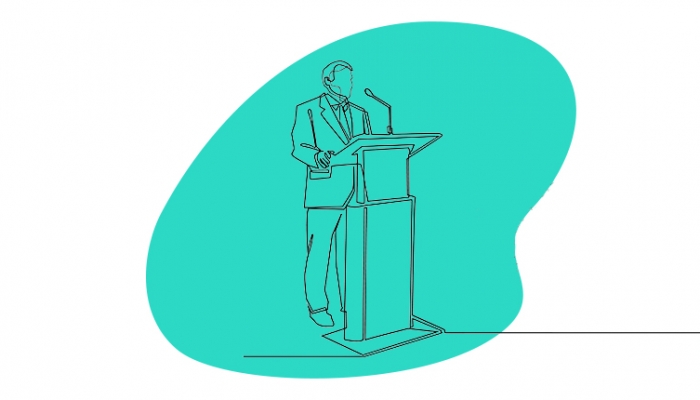Sunak and Starmer’s conference season: A battle of agenda setting
Party conferences have often been an important tool for leaders to set the political agenda. Tony Blair’s establishment of the ‘New Labour’ moniker in 1994, his modification of clause 4 in 1995, Margaret Thatcher’s ‘this lady’s not for turning’ moment in 1980 or Neil Kinnock’s assault on Militant tendency in 1985 – all are powerful examples of when leaders used their conference speeches to announce a change in direction, or to clarify their goals.
As the party conference season is over, Prime Minister Rishi Sunak and Labour Leader Sir Keir Starmer are both facing a potentially pivotal General Election next year. For this reason, both tried to use the conference season to do their own agenda setting as their parties prepare.
The Conservatives and Rishi Sunak as a ‘vehicle for change’?
Sunak came into this conference season in far from ideal circumstances, with leaked plans to scrap HS2 and his shift over Net Zero both receiving widespread criticism. Additionally, this represented Sunak’s first conference as Conservative Party leader, with the previous two Conservative conferences having two different leaders – a sign of the political instability of the last few years. Moreover, recent by-election losses in Selby and Ainsty and Somerton and Frome in July 2023 had possibly left the party feeling flat and potentially devoid of ideas, despite a victory in Uxbridge and South Ruslip, showing the importance of green issues. Sunak’s challenge was to reinvigorate a party whose MPs have been briefing journalists that they would lose the next General Election.
With this in mind, Sunak’s attempt to position himself and the Conservatives as a vehicle of change was plain to see. His speech started with a personal touch with his wife, Akshata Murty, introducing him to the stage. The comparisons to Sarah Brown introducing Gordon Brown to the Labour conference in 2009 are there – this also might be a reflection of the similarities in Sunak’s political position to Gordon Brown’s at the time. Nevertheless, Murty’s speech was perhaps an attempt to position him as something more than a spreadsheet guru – someone who could understand the hopes and fears of everyday people.
To complement the focus on Sunak himself as a vehicle for change, Sunak made a clear effort to reposition the Conservatives. In a bold approach, Sunak bemoaned the political orthodoxy of the last 30 years. He started by accepting the need for transformational political change, and noted that politics ‘does not work the way it should do’. He slammed the ‘vested interests’ and the ‘rhetorical ambition’ of politicians over the last 30 years and said Labour Leader, Sir Keir Starmer, was an example of this.
This rhetoric of change was coupled with a series of policy changes: the announcement of a new Advanced British Standard Qualification for post-16 education; a gradual smoking ban; and the formal announcement of HS2 leg to Manchester being scrapped to instead invest in infrastructure projects across the country.
However, there are recent doubts over the ‘change’ Sunak is offering. Specifically, the new Advanced British Standard Qualification is not set to come in until 2033. Furthermore, Sunak’s series of ‘new’ commitments to transport infrastructure after scrapping HS2 contain a series of promises that have been discussed for years – such as dualling the A1 in Northumberland. This may leave Conservatives wondering if it is too little too late.
Sir Keir Starmer’s ‘light touch’ vision?
If Sunak’s political circumstances were far from ideal going into the conference season, then Starmer perhaps could not have asked for much better. A by-election victory against the SNP and a swing of 24.1% in Rutherglen and Hamilton West in September 2023 added to an already existing euphoric mood in the Labour Party – who have been leading the Conservatives in the opinion polls since December 2021. Moreover, a 47% personal approval rating for Starmer is nothing to complain about either.
Nonetheless, some have argued that Starmer has done little to explain to voters why they should vote Labour as a vote for a Labour Government and not purely as an anti-Conservative vote. In this sense, few knew what Starmer’s Britain would look like.
From the offset, Labour tried to answer this. The conference centre was draped in Union Jacks with ‘Britain’s Future’ on them – a clear attempt to equate the Labour Party with British patriotism. Starmer’s speech was marked by a commitment to a ‘decade of national renewal’ to get ‘Britain’s future back.’ Likewise, he tried to place the Labour party as the place for disgruntled Conservative voters – this may not just be a throwback to Tony Blair’s courting of Conservatives but also an attempt to show that Labour can represent everyone.
His speech reiterated some tried and tested formulas: abolishing the nom dom status to invest in the NHS; prohibition of zero hour contracts; establishment of a national living wage; creation of Great British Energy; and a national wealth fund. Additionally, while there were no new policy announcements on climate change, Starmer stressed his commitment to tackling climate change in face of Sunak’s recent policy change – some may welcome Starmer’s attempt to ‘clear the red water’ on this issue.
Starmer also focused on the housing crisis. He stressed that only Labour could get Britain building again as he promised to build 1.5 million homes by ‘bulldozing’ planning regulations and the creation of new town. However, Starmer’s plans on doing this remains to be seen. Starmer’s section on housing could be a reflection of his position after the conference, giving a clearer view on his priorities for Government while remaining light on the hows.
This brings us to today, where Labour have just won two by-elections in a swing of 23.9% in Tamworth and a swing of 20.5% in Mid-Bedfordshire – both, most importantly, from the Conservatives. With potentially less than a year until the next General Election, the conferences have set the parameters for this next stage.
For the UK media’s take on 2023’s party conference season, read our interview with The Telegraph’s political editor Ben Riley-Smith.





Leave a Comment